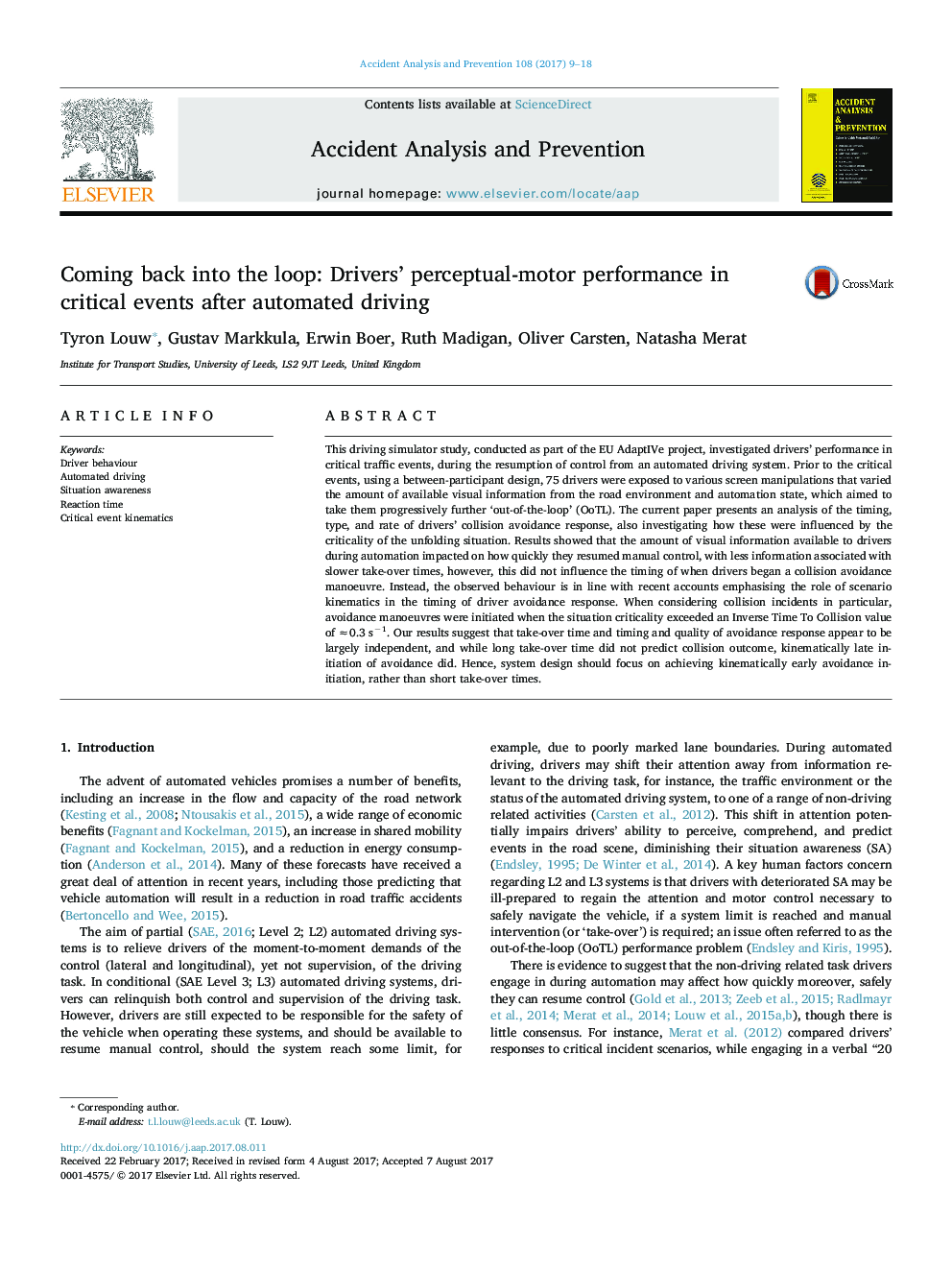| Article ID | Journal | Published Year | Pages | File Type |
|---|---|---|---|---|
| 4978501 | Accident Analysis & Prevention | 2017 | 10 Pages |
Abstract
This driving simulator study, conducted as part of the EU AdaptIVe project, investigated drivers' performance in critical traffic events, during the resumption of control from an automated driving system. Prior to the critical events, using a between-participant design, 75 drivers were exposed to various screen manipulations that varied the amount of available visual information from the road environment and automation state, which aimed to take them progressively further 'out-of-the-loop' (OoTL). The current paper presents an analysis of the timing, type, and rate of drivers' collision avoidance response, also investigating how these were influenced by the criticality of the unfolding situation. Results showed that the amount of visual information available to drivers during automation impacted on how quickly they resumed manual control, with less information associated with slower take-over times, however, this did not influence the timing of when drivers began a collision avoidance manoeuvre. Instead, the observed behaviour is in line with recent accounts emphasising the role of scenario kinematics in the timing of driver avoidance response. When considering collision incidents in particular, avoidance manoeuvres were initiated when the situation criticality exceeded an Inverse Time To Collision value of â0.3Â sâ1. Our results suggest that take-over time and timing and quality of avoidance response appear to be largely independent, and while long take-over time did not predict collision outcome, kinematically late initiation of avoidance did. Hence, system design should focus on achieving kinematically early avoidance initiation, rather than short take-over times.
Related Topics
Physical Sciences and Engineering
Chemical Engineering
Chemical Health and Safety
Authors
Tyron Louw, Gustav Markkula, Erwin Boer, Ruth Madigan, Oliver Carsten, Natasha Merat,
